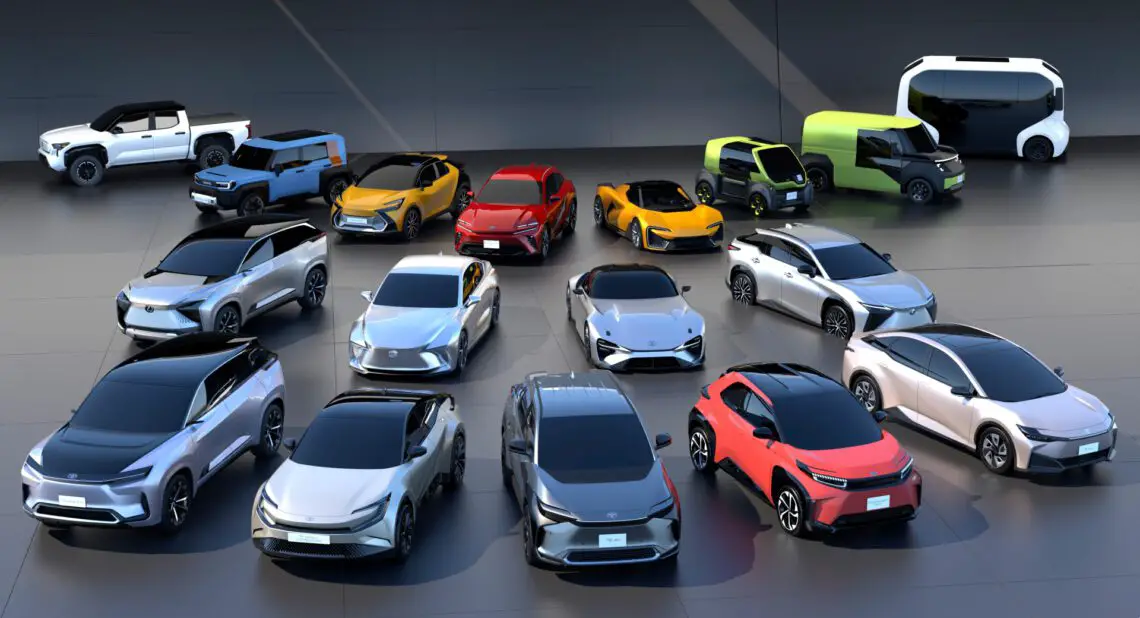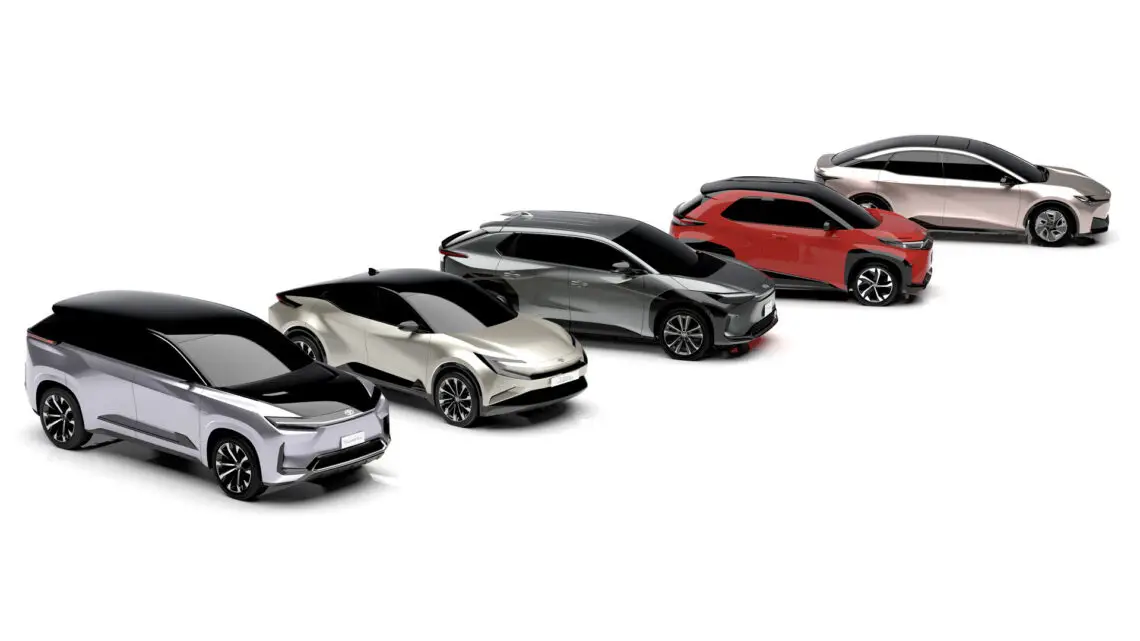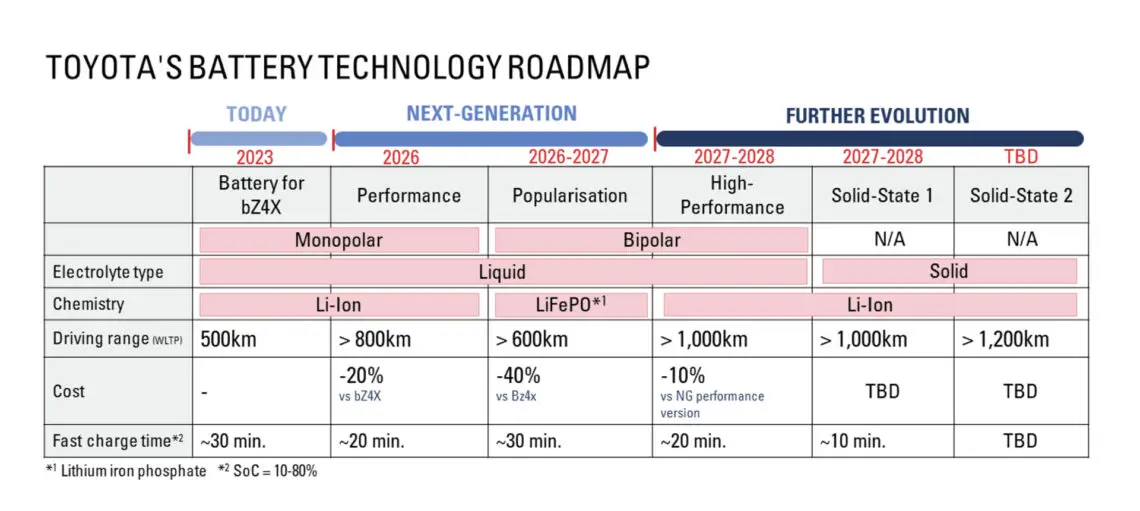Toyota promises solid-state batteries in 2027-2028, up to 1,200 km range!
Four battery types in development
During a recent technical workshop at Toyota’s new BEV Factory, the brand provided insight into BEV technologies for the next generation of vehicles. The data show that Toyota is working on three liquid electrolyte battery technologies: ‘Performance’, ‘Popularized’ and ‘High Performance’.
Reduction of battery height
Liquid electrolytes are currently the mainstream technology for BEVs. In addition, the brand is working on Solid-State batteries. For each battery type, Toyota provides detailed information. One thing is clear: Toyota promises bets on higher energy density, faster charging speeds, more interesting cost competitiveness and, above all, a reduction in battery height. Toyota’s aim is to reduce the battery height to 120 mm, and even 100 mm in the case of powerful sports cars where a low hip position is also desirable. For imaging purposes, the battery pack of the bZ4X including housing is about 150 mm high. Reducing battery height provides a greater driving range and improves a car’s “packaging.

Performance – lithium-ion
The Performance lithium-ion battery should allow a driving range of more than 800 kilometers. The battery also provides . This type of battery also further offers 20% cost savings over the current bZ4X BEV and a fast charging time of 20 minutes or less (10-80%). This battery is expected around 2026.
Popularized – lithium iron phosphate
To make electric cars accessible to the widest possible range of people, the brand is also working on more affordable battery: the Popularized battery. This battery has bipolar technology that Toyota developed and already uses in its NiMh batteries for hybrid electric vehicles, combined with affordable lithium iron phosphate (LiFePO) as the core material. This type of battery also further offers a 20% greater range and 40% cost savings over the current bZ4X as well as a fast charging time of 30 minutes or less (10-80%). When is this technology coming? Presumably around 2026-2027.

High-Performance – lithium-ion
Toyota is also developing a High-Performance battery. This battery combines the bipolar structure with lithium-ion chemistry and a cathode with a high nickel content. The Japanese are aiming for a driving range of more than 1,000 kilometers on a full battery charge. This battery should achieve a cost savings of another 10% over the Performance battery and offers a fast charge time of 20 minutes or less (10-80%). The High-Performance battery is expected around 2027-2028.

Solid-State – lithium-ion
Now it really gets interesting. Toyota says it has achieved a technological breakthrough regarding the durability of lithium-ion solid-state batteries. Until recently, a solid-state battery had a shorter lifespan. Thanks to recent technological developments, Toyota has overcome this drawback, allowing the brand to focus on mass-producing solid-state batteries.
Toyota’s solid-state batteries have a solid electrolyte that allows ions to move faster. An additional advantage: they can better tolerate high voltages and temperatures, allowing rapid charging and discharging of the battery. The customer also benefits from more power and the battery also gets a bit smaller.
Toyota expects this technology to be ready for commercial use around 2027-2028. Although solid-state was initially planned for application in hybrid vehicles (HEVs), Toyota is now focusing primarily on next-generation BEVs. Toyota’s first solid-state battery offers 20% increase in range over the Performance battery (approximately 1,200 kilometers) and a quick recharge time of 10 minutes or less (10-80%).

Next generation of BEVs
Takero Kato, president of Toyota’s BEV plant, can confirm that the next generation of BEVs will appear on the market starting in 2026. Kato-san also emphasizes that offering different battery technologies is critical to making BEVs attractive to a wider range of customers. “We need different options for batteries just as we offer different motor variants. It is important to offer battery solutions that are compatible with a variety of models and customer needs,” said Kato-san.

